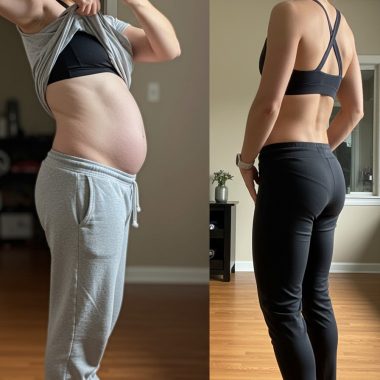The keto diet is a way of eating that is high in fat, low in carbohydrates (carbs), and moderate in protein. The main goal is to help your body burn fat for energy instead of carbs. This process is called ketosis
When you eat very few carbs, your body starts using fat as its main fuel. It turns fat into ketones, which your body and brain use for energy.
Main Nutrient Ratios in a Keto Diet
- 55–60% fat
- 30–35% protein
- 5–10% carbohydrates
Benefits of the Keto Diet
- May help with weight loss
- Can reduce fat storage
- May help control blood sugar levels
- Can make you feel full for longer
Foods Commonly Eaten on Keto
Most keto meals include meat, fish, eggs, and dairy. It’s also important to add fiber, which helps with digestion and can prevent constipation.
1-Week Keto Meal Plan (Sample)
Monday
- Breakfast: Egg muffins with cheddar cheese, spinach, and sun-dried tomatoes
- Lunch: Spiced cauliflower soup with bacon or tofu
- Dinner: Garlic and butter shrimp with zucchini noodles
- Snacks: Turkey and cucumber roll-ups, celery with guacamole
Tuesday
- Breakfast: Scrambled eggs with sautéed greens and pumpkin seeds
- Lunch: Chicken salad with avocado, tomato, cucumber, almonds, and onion
- Dinner: Beef stew with mushrooms, onions, celery, and herbs
- Snacks: Olives, almond milk smoothie with nut butter, chia seeds, and spinach
Wednesday
- Breakfast: Omelet with mushrooms, broccoli, and peppers
- Lunch: Avocado egg salad in lettuce cups
- Dinner: Cajun chicken breast with cauliflower rice and Brussels sprouts
- Snacks: Nuts, cheese, and bell pepper slices
Thursday
- Breakfast: Smoothie with almond milk, nut butter, spinach, chia seeds, and protein powder
- Lunch: Shrimp and avocado salad with feta, herbs, and olive oil
- Dinner: Garlic butter steak with mushrooms and asparagus
- Snacks: Boiled egg, flax crackers with cheese
Friday
- Breakfast: Fried eggs with avocado and blackberries
- Lunch: Grilled salmon with leafy green salad
- Dinner: Chicken breast with cauliflower mash and green beans
- Snacks: Kale chips, cheese, and bell pepper slices
Saturday
- Breakfast: Scrambled eggs with jalapeños, onions, and tomatoes topped with sunflower seeds
- Lunch: Tuna salad with tomatoes and avocado, plus macadamia nuts
- Dinner: Pork chops with non-starchy vegetables
- Snacks: Celery with almond butter, a few berries, and nuts
Sunday
- Breakfast: Yogurt with keto-friendly granola
- Lunch: Beef burger (no bun) with guacamole and kale salad
- Dinner: Stir-fried chicken, broccoli, and peppers with satay sauce
- Snacks: Sugar-free turkey jerky, egg and vegetable muffin
Vegetarian or Vegan Keto Options
Keto can be tricky for vegetarians or vegans because many plant-based proteins (like beans and lentils) are high in carbs.
However, it’s still possible:
- Vegetarians can include eggs, cheese, and yogurt for protein.
- Vegans can use avocados, coconut products, nuts, seeds, and plant oils as fat sources.
Focus on high-fat, low-carb plant foods like tofu, tempeh, coconut oil, avocado, chia seeds, and nuts.
Foods to Eat on Keto
Proteins
- Chicken, beef, pork, lamb, turkey, and organ meats
- Fish: salmon, mackerel, herring
- Eggs
Dairy
- Butter, cream, full-fat yogurt, cheese (cheddar, mozzarella, goat cheese)
Fats & Oils
- Avocado oil, olive oil, coconut oil, nut oils
- Avocados, olives, coconut
Nuts & Seeds
- Almonds, walnuts, macadamia nuts, chia seeds, flaxseeds, pumpkin seeds, peanuts
Vegetables (Non-starchy)
- Broccoli, cauliflower, spinach, zucchini, peppers, celery, asparagus, tomatoes, mushrooms
Condiments
- Herbs, spices, vinegar, lemon juice, olive oil dressings (no added sugar)
Drinks
- Water (still or sparkling), tea, coffee (unsweetened), almond milk, bone broth
You can sometimes enjoy bacon, berries, or a little low-carb alcohol like vodka.
Foods to Avoid on Keto
Carbs and Sugary Foods
- Bread, rice, pasta, cereal, pastries
- Candy, soda, fruit juices, beer
- Fast food and sugary snacks
Starchy Vegetables
- Potatoes, corn, pumpkin, sweet potatoes
Fruits
- Bananas, grapes, pineapple, dried fruits
Dairy to Avoid
- Milk, ice cream, sweetened yogurt
Processed and Breaded Foods
- Breaded meats, fried fish, sugary sauces (like ketchup or BBQ sauce)
Oils to Avoid
- Vegetable oils such as canola, corn, or margarine
Tips for Staying on Keto
- Choose a start date and prepare your kitchen.
- Remove high-carb foods from your fridge and pantry.
- Plan meals weekly to stay balanced and avoid hunger.
- Check labels for hidden sugars or carbs.
- Meal prep in advance and freeze portions.
- Drink lots of water and add electrolytes to prevent “keto flu.”
- Eat smaller, frequent meals if you feel hungry often.
- Rest more during your first week — your body needs time to adjust.
- Talk to a doctor or dietitian before starting to make sure it’s safe for you.
Summary
The keto diet focuses on high fat, moderate protein, and very low carbs.
It encourages the body to use fat as energy, which can lead to weight loss.
Meal planning helps you stay on track, meet your nutrient goals, and feel full.
Always choose whole, natural foods and avoid processed ones. With planning and patience, the keto diet can become a healthy and sustainable lifestyle.


